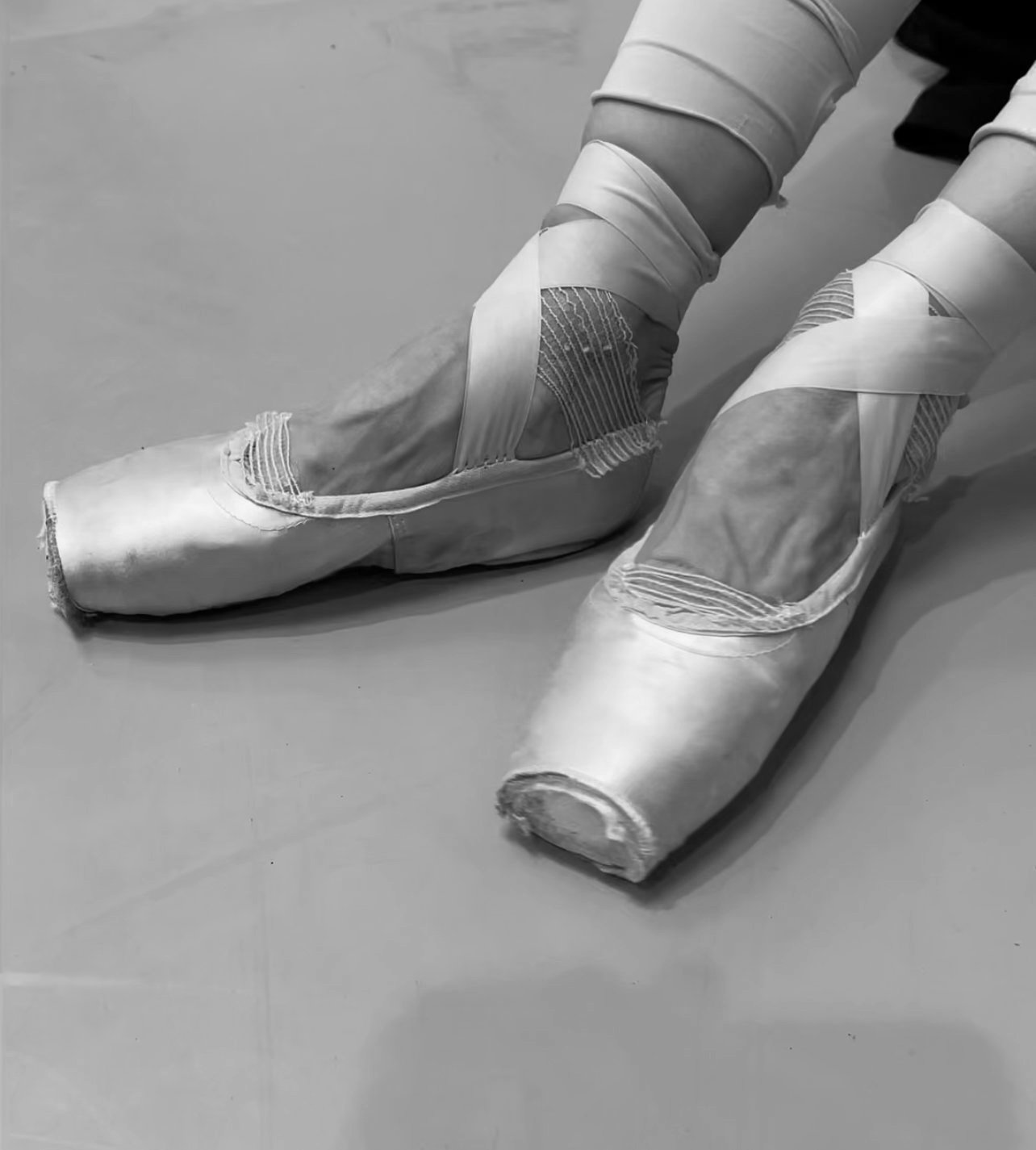A dancer’s body is like an instrument. It must be kept fine tuned.
This should be done with wisdom and respect to ensure that the dancer is in good health, physically and psychologically.
Teachers must develop ways of transmitting older, yet valid, and timeless information. They must expand on the already existing classical methods. They must use what is being learned and experienced today to allow classical training to flourish without ever losing the sense of what art is.
Dance as an art form is about communication but its voice is seen, not heard. When dancing you are a physical expression of emotions and points of view. 4Pointe can be a tool through which you develop your own articulation through the enhancement of “Speaking Feet”.

What is 4Pointe?
4Pointe is not your standard pointe class. It is also not a replacement for it either. 4Pointe is a goal orientated, specific method of pointe exercises. When done properly, it not only builds strength and high articulation, but also engages and works the entire body.
4Pointe focuses on 5 particular elements:
Alignment of the foot and leg. Focusing on how the dancer stands on pointe, necessary for all elements of a dancers work.
Isolation of the intrinsic muscles of the foot to develop better articulation of the toe area necessary for rolling down from pointe.
Development of the articulation of the ankle joint also necessary for rolling off pointe and landing from jumps.
Repetition to develop the endurance necessary for strengthening the foot and ankle to sustain standing on pointe for long periods of time.
Intensity and precision to build the necessary speed, accuracy, and high level articulation
Why did I create 4Pointe?
Pointe work and articulation were strengths of mine as a ballerina and upon retiring and moving into teaching and coaching they remained my passion. I have experienced as a teacher and coach over the past fifteen years a tremendous strain on dancers due to the change in requirements made on them stemming from more modern and contemporary choreographies. These demands have put great stress on their physique and the training methods are not matching their needs. This is where the idea for a newer method of training dancers on pointe came about.
How is 4Pointe done?
4Pointe primarily takes place at the barre. All aspects of pointe work, including small jumps, are covered and so moving away from the barre is not necessary to develop proper pointe technique. The longterm goal being to bring all of the fundamental pointe techniques to the centre when a dancer is ready. Classes are typically 60 minutes for beginners and can be up to 90 minutes for advanced students and professionals.
The method is made up of a compilation of hundreds of pointe exercises that isolate and work the forefoot, mid-foot, hind-foot, and intrinsic muscles underneath the foot. These exercises are done in three categories: 2-feet, 2-feet to 1-foot, and 1-foot.
The exercises done on 2-feet are in 1st, 2nd, 3rd, 4th, 5th, and 6th positions.
The exercises done from 2-feet to 1-foot are done in 1st, 2nd, 4th, and 5th positions.
Lastly, the exercises done on 1-foot are mostly from 5th position.
Échappés have their own category, as do bourrées, and jumps on pointe. All start at the barre and can later be brought to the centre.
Daily repetition ensures that the foot will develop properly. This enables the dancer to attain a higher level of articulation in their legs and feet, as well as stability and a better sense of the floor beneath them, in classical, contemporary, and modern movement.
A note on the 6th position:
You might ask why I use 6th position as an element of 4pointe training. In todays choreography there is much done in ‘turned in’ positions. These use very different muscles that are often overlooked in classical training. There is different coordination required and sensation felt in the legs and feet. As such, it is an invaluable aspect of the 4Pointe method.
